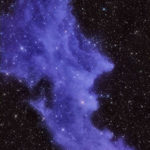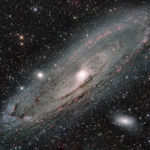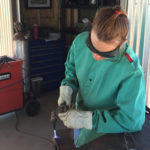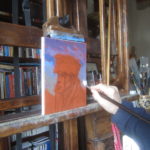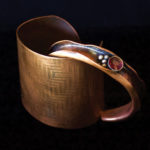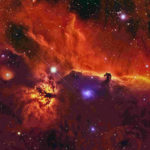Four Diverse Artists
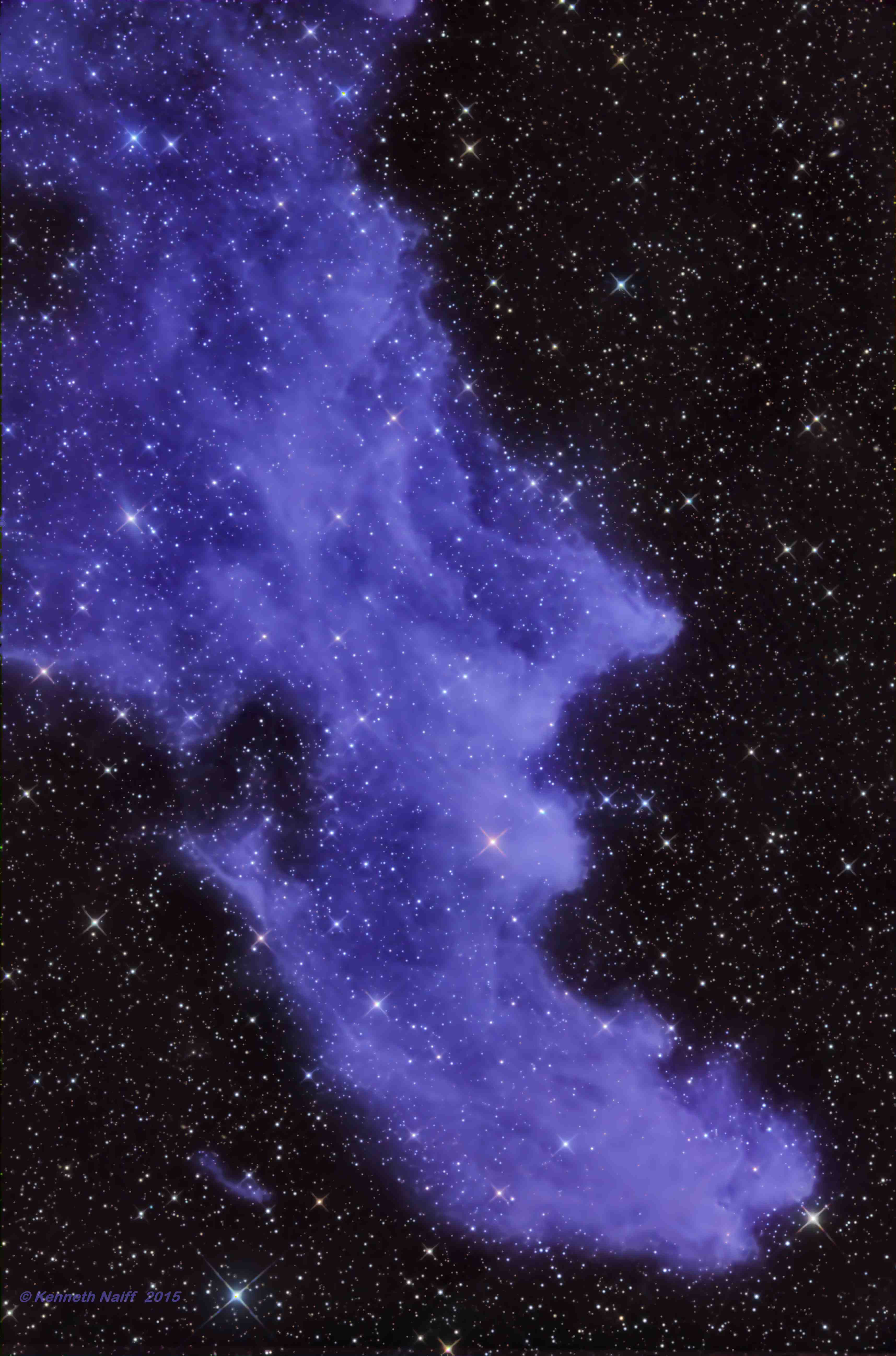
Writer Sue Kern-Fleischer
[dropcap]F[/dropcap]rom as far away as six trillion miles into space to as close as the bunny behind a house, the Sonoran Arts League artists participating in the 21st Annual Hidden in the Hills Artist Studio Tour are inspired by a variety of subjects. Science, nature, history, human behavior, animals, architecture and much more are captured creatively in paintings, drawings, sculpture, photography, glass, wood, fabric, jewelry and mixed media by the 174 artists who will show and sell their fine art in 44 studio locations throughout the scenic Desert Foothills communities of Cave Creek, Carefree and North Scottsdale.
As Arizona’s largest and longest-running artist studio tour, this year’s Hidden in the Hills (HITH) event takes place from 10 a.m. to 5 p.m. during the last two weekends of November: November 17–19; and November 24–26.
“Whether you’re a serious collector or you are just starting your art collection, Hidden in the Hills offers a rare chance to observe artists at work in their private studios. In addition, many guest artists also set up to demonstrate,” said HITH marketing chair Carole Perry, a glass artist who has opened her studio to patrons for all 21 years of the tour. “With the event taking place the weekends before and after Thanksgiving, the art tour also attracts holiday shoppers who want to find an original, unique gift and support local artists.”
Four of the artists participating in the free, self-guided art tour have very different backgrounds, yet they share a strong passion and intense awe for their subject matter.
Kenneth Naiff
Capturing Brilliant Images in Deep Space
As an astrophotographer, Ken Naiff travels and camps throughout the Southwest in search of clear, dark night skies to photograph deep space objects—galaxies, nebulae, and star clusters that are many light years away.
Naiff’s life-long passion for astronomy began in 1957 when, as a young boy, he used a small telescope to watch Sputnik orbiting. A British native who was trained as an engineer, he moved to the United States in 1976 and became a citizen in 2001. He and his wife June retired and settled in Scottsdale in 2004.
“I’ve been an armchair astronomer all my life,” Naiff said, adding that he began his fieldwork in astrophotography after he retired. “I gave myself a 10-year apprenticeship before I started selling my work. Because of my knowledge of electrical, computer and mechanical engineering, I was able to teach myself how to use the specialized cameras, telescopes, and mounts as well as the mathematically sophisticated software to manage the equipment, collect the data and process the images.”
Naiff explained that deep space objects like the gas clouds, or nebulae, in the Milky Way are enormous—most of them are bigger than the moon.
“Because they are so far away, they look smaller and they’re very dim. Galaxies are even more distant and challenging,” he said.
Capturing the beauty and wonder of deep space objects requires patience. Since his camera is monochromatic, he takes multiple exposures, through multiple filters, both conventional and scientific, to capture the data he needs. Typically, exposure time is 15 to 20 minutes for each image, and he may take up to 100 images of one object. One of his most recent images required a total exposure time of 31 hours.
Part of the challenge is that he has a limited window of opportunity to collect data. He can only work at night during the dark new moon phase, about five nights each month. It may take two to three months to capture a sufficient amount of data for just one image.
Weather, satellites and planes also present challenges and may render a long exposure useless. Of course, the Earth is rotating and good “tracking” is essential.
“If I can produce two to three images a year that are good enough to sell, I’m very happy,” he said.
Another challenge is that he never knows how good his data is until he gets back to his studio to process it.
“After several weeks of processing, I start to see the details, shapes and colors, and when the data is good, I am very excited,” he said.
Naiff completes the processing to optimize the clarity, color, and hue to create richly-detailed, high-resolution works of art.
“The final image reflects my personal expression,” he said, adding that he hopes his images will prompt questions, especially from children, so that they may gain more appreciation of the beautiful, awe-inspiring deep space objects that are just beyond our eye’s grasp.
Naiff will exhibit and sell limited editions of his work at Bela Fidel’s Studio #17. His work will range in size from large limited editions of 50 to smaller limited editions of 250.
Tracy Paul
Forging Science and Nature into Whimsical Sculptures
Like Naiff, sculptor Tracy Paul has a deep appreciation for science. A California native, she completed her graduate work at Arizona State University, where she studied at the High Resolution Electron Microscopy facility in the Center for Solid State Science. A consortium of the university’s physics, chemistry and geology departments, the facility is considered to be one of the world’s premier laboratories for developing new microscopy instrumentation and techniques.
For more than two decades, she has been the chief scientist at Depths of the Earth Company, where she and her team design and manufacture instruments for high-pressure, high-temperature materials research.
But she is equally passionate about art, stating, “There is a science to art and an art to good science.”
She credits her parents with letting her explore her creativity in her youth.
“In sixth grade I tested as gifted and was encouraged to move ahead in school, but my parents didn’t want me to rush through childhood, so they channeled my energy into extracurricular science and art,” Paul said. “My great uncle was a marine biologist and mathematician who used our local tide pools and beach cliffs to teach me the scientific process. I learned painting, stain glass, printmaking, ceramics and woodworking at the local artisans’ workroom.”
While completing her graduate work, she took up furniture construction and woodworking through Rio Salado Community College.
“After graduation, I was teaching at Mesa Community College in 1997 and decided to take a course offered on campus called Welding for Metal Sculpture. Rod Hammel, one of the great teachers in my life, and a local Carefree artisan himself, taught the course. It is likely that Rod ignited the creative pursuits of many of Sonoran Arts League’s metal workers,” she said.
She instantly loved the welding fabrication and finishing process, and her background in chemistry delighted in the physical and chemical patina of metal surfaces.
Her current body of metal work is the representation of local flora and fauna, and she draws much of her inspiration from her spirituality.
“I am guided by my Lutheran faith, and I also have lived in close commune with nature and natural phenomena—the kinds of things that science is hard-pressed to explain,” she said.
“I believe that my work is guided by a force greater than myself and is a gift unique to me. Sure, I know how to develop particular colors and surfaces in the chemical processing of the metal, but I can’t explain how I can finish a piece, set it out in the rain, and return to discover that nature’s patina is 10,000 times more amazing than anything I could mix in chemicals. To me, that is God’s kiss on my work.”
Paul is a guest at Nicolette Bonnstetter’s Studio #7, where she will exhibit a variety of contemporary metal and mixed media sculptures, including ravens, plants, desert birds, small garden totem wish sticks and tall, thin story poles.
“Almost all of my work carries the sense of humor and abundance that I see in life around me,” she said. “The work embodies animals doing silly things. When nature is your subject matter, and metal is your medium, the possibility of expression is endless!”
Joe Netherwood
Sharing Stories from the Old West through Realist Paintings
Life has a funny way of steering us in a different direction. For acclaimed oil painter Joe Netherwood, life took a serious turn after he spent five years performing as a professional stand-up comedian throughout the mid-Atlantic and Midwest states. Back then, he had no idea that years later, he would be invited to participate in prestigious, juried shows at the C.M. Russell Museum in Great Falls, Montana; the Phippen Museum in Prescott; the Briscoe Western Art Museum in San Antonio, Texas; the Gilcrease Museum, in Tulsa, Oklahoma; and many other notable Western art shows.
A trip to Brandywine River Museum in Chadds Ford, Pennsylvania was the catalyst that started him on his career as a fine artist and influenced him to portray the love of the West that lay dormant in him since childhood.
“I grew up watching Roy, Hoppy and Gene’s adventures on TV, but seeing N.C. Wyeth’s classic Western illustrations at the museum reignited that passion I had for the West,” Netherwood said.
The Richmond, Virginia-native had some prior training. After being stationed with the Air Force in Texas, he worked as a designer and an illustrator in Philadelphia, where he studied with several faculty members of the Pennsylvania Academy of Fine Arts.
Five years after his trip to Brandywine River Museum, he and his wife, Stephanie, moved to Arizona where his career took off. Mostly self-taught, he immersed himself in the Western lifestyle by visiting and working on ranches, cattle drives and roundups. In addition, he spent countless hours researching the Old West.
“I’m a hopeless realist,” he said. “Not only do I want my work to show the diverse cultures and ethnic backgrounds of the West, I want every detail to be accurate. That means all of the clothes, accessories, riggings on horses, wagons and other details must be period-correct.”
With each oil painting, he strives to tell a story. Whether it’s a large evocative painting depicting a battle, a medium-sized piece showing the serene landscape of the plains, or a miniature portrait showing the raw emotions of his subject, he pays close attention to form, color and light to capture the beauty and untamed wilderness of the American West.
“The characters of the West intrigue me the most, and I enjoy the challenge of portraying their diverse personalities,” he said. “I get the most satisfaction from painting their faces, and I save that for last. It’s kind of like having dessert after a meal—it’s my favorite part of painting, and I look forward to seeing the final, finished piece.”
While he takes his painting very seriously, he’s never lost his sense of humor.
“Sometimes I insert humor into my paintings and, if I can, I’ll come up with a clever, tongue-in-cheek title for a painting,” he said, adding that he even keeps a journal of title names that he and Stephanie come up with. “We have a lot of fun coming up with creative titles, and I think our collectors find them to be entertaining.”
Netherwood will be at Jane Boggs’ Studio # 27 during Hidden in the Hills, where he will exhibit a variety of paintings depicting mountain men, Native Americans, cowboys, cowgirls, ranchers and other Western scenes.
Kathi Turner
Keeping the Old West Alive through Brand Pendants
and Rustic Jewelry
Like Netherwood, Kathi Turner is passionate about keeping the Old West alive, but rather than using a paintbrush, she cranks up her torch and welds sterling silver and 100 percent copper into striking Western, Southwestern and contemporary jewelry designs that feature natural stones, such as turquoise, malachite and lapis from local mines.
A host of Studio #13 in Scottsdale, Turner’s ranching adventure began 50 years ago when she married her husband, Tom. She and her family cherished their life as cattle ranchers on the wide-open plains of eastern Washington, southeastern Oregon and the remote high desert near the Nevada border line.
“My work represents my connection to the earth and its beauty reflecting the simple, rustic, remote lifestyle of living and loving Western ways in wide-open spaces,” Turner said. “The ranch memories inspire and motivate what I do.”
As a unique niche, she celebrates her affinity for fellow ranchers by creating custom ranch brand pendants.
“I create what is also known as a storyteller pendant. I take three major things in a person’s life and hand-make meaningful symbols for the pendant, usually adding a small stone of some sort, but not always,” Turner said.
Some of her commissioned storyteller pendants are inspirational, like the one she recently created for a woman to give to her 90-year-old rancher husband. Other times, the stories are heartbreaking.
“A ranching friend of mine in Oregon lost her 10-year-old son in a car accident. She asked me if I could make her something she could wear every day. She told me a little about him, although I already knew, but it helped her to tell me,” she said. “He loved to rope, so I took sterling silver rope wire and shaped it into a lariat, which came around a small piece of turquoise. Inside the lariat, I put his initials, JBR, with copper wire.”
She finds her work with the ranch brand and storyteller pendants most challenging.
“I do many ranch brand pendants and storyteller pendants, which represent something that’s really near and dear to my clients’ hearts, and it’s important to me to get it right,” Turner said. “When a ranch brand has been in the family for generations, it’s special to that whole family and for generations to come. It represents their family’s sacrifice and dedication, and love of the livestock and land.”
Not only does she try to keep the Old West alive through her original, hand-made jewelry, she jumps at any chance to share stories about the ranching lifestyle.
“The Western way of life is a gift given to a very few, and yet not everyone can understand it,” she said. “Cowboys are a special kind of people, and I’m still so happy I’m associated with them. I’m also inspired by Native American storytellers who pass on the stories of the ancestors of their tribe. So, my goal is to pass on the stories I’ve heard and share my experience, not only with other ranchers, but with urban dwellers and people of diverse backgrounds.”
480-575-6624
hiddeninthehills.org


